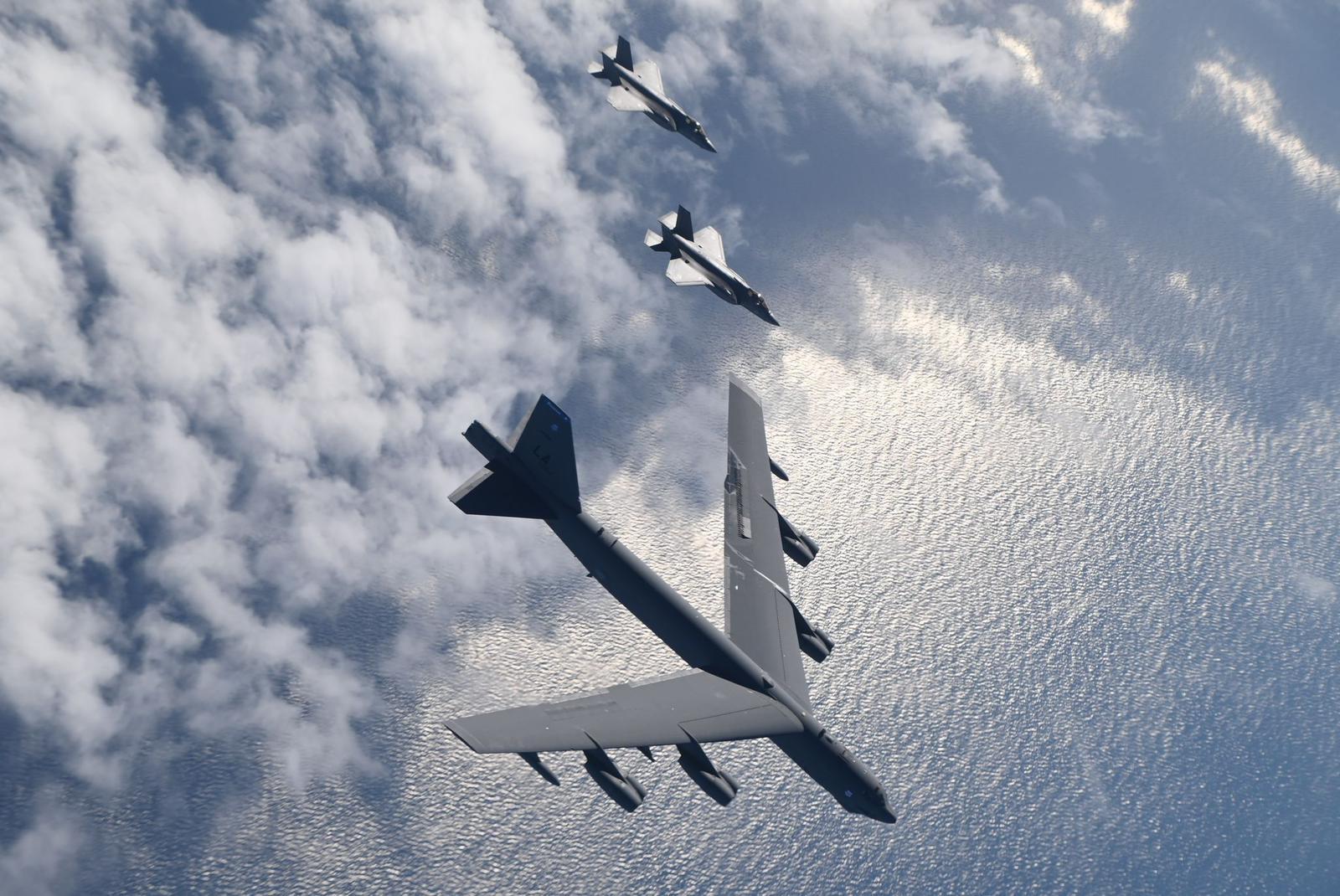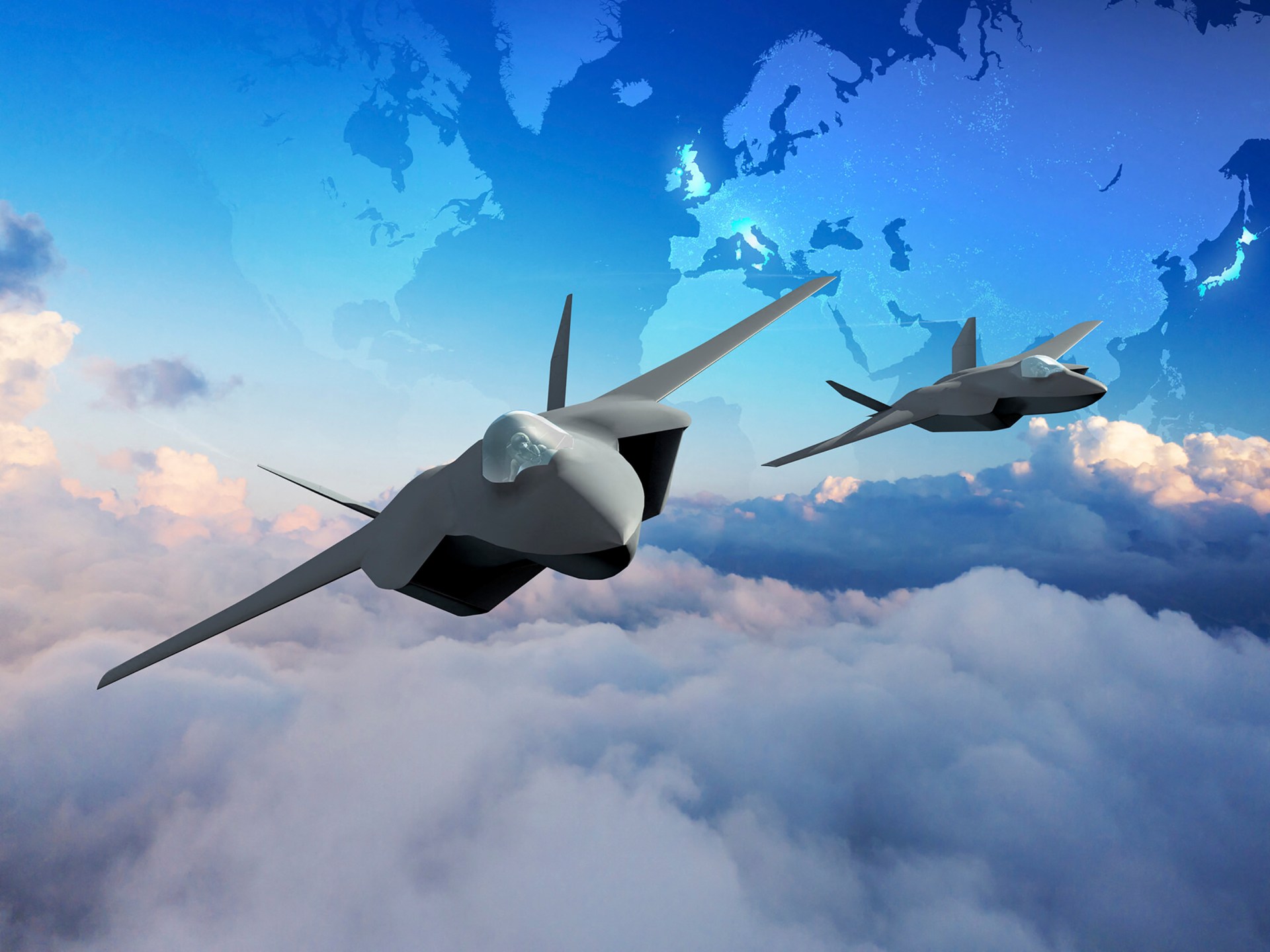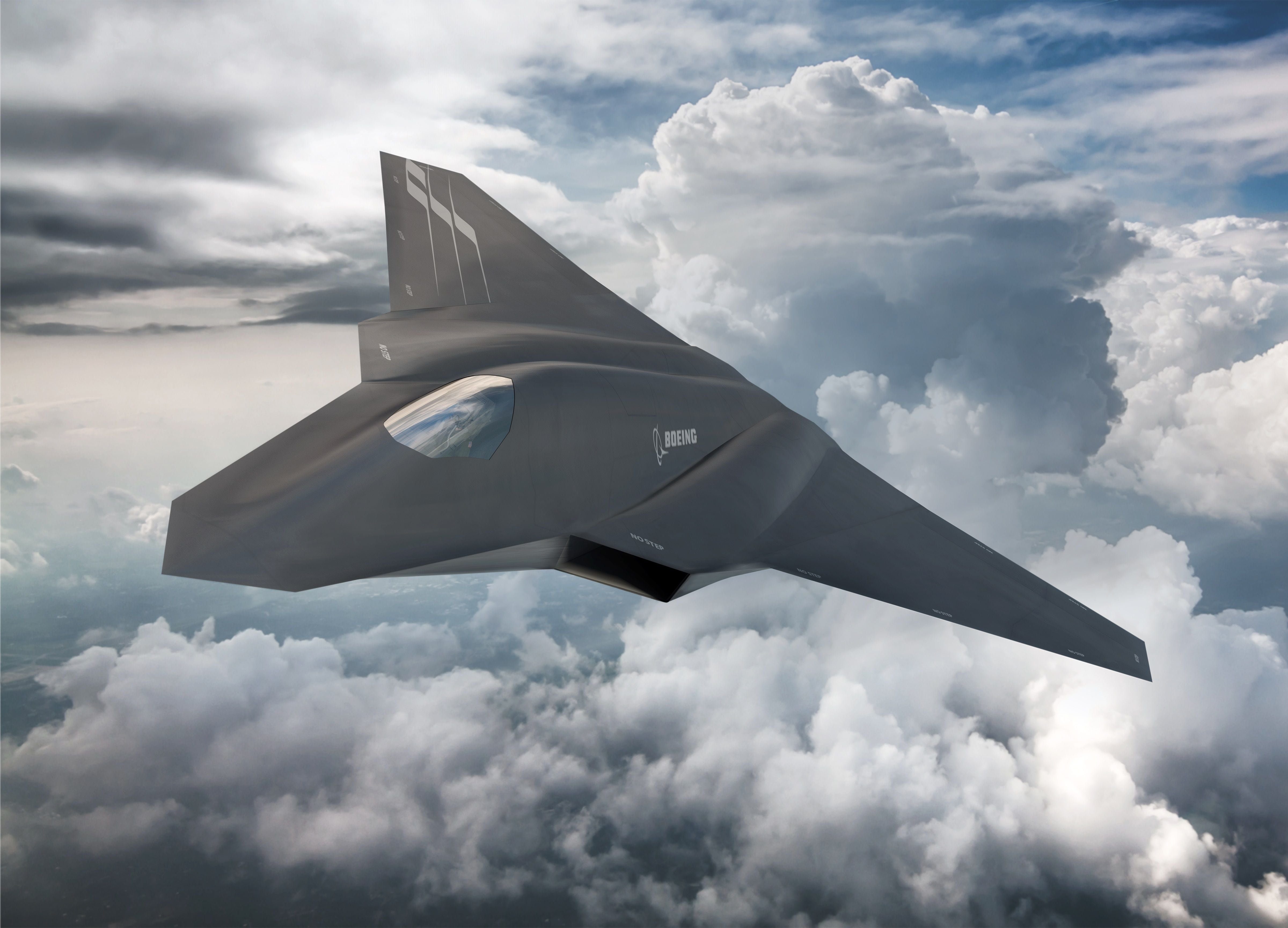Photos Of Fighter Jets - F-16 Fighting Falcon (left), P-51D Mustang (below), F-86 Saber (above) and F-22 Raptor (right) fly in a formation of four American fighter groups.
A fighter is a fixed-wing military aircraft designed primarily for air combat. In military warfare, the role of fighter jets is to ensure air superiority in space. Dominance of the airspace over the battlefield allows bombers and attack aircraft to carry out strategic and strategic bombing of targets.
Photos Of Fighter Jets

An important sign of the effectiveness of a fighter is not only its performance, but also its speed and maneuverability in relation to the target aircraft. The success or failure of a fighter's efforts to achieve air superiority depends on many factors, including the skill of the pilot, the tactical soundness of his fighter deployment doctrine, and the number and effectiveness of those fighters.
Russia New Fighter Jet: Single Engine Stealth Fighter Details
Many modern fighter aircraft also have secondary capabilities, such as ground attack, and some types, such as fighter-bombers, are designed for dual roles from the start. Other fighter designs are specialized while still fulfilling an air superiority role and include fighters, heavy fighters and night fighters.
The type of giv can be designed for specific combat conditions and in some cases for additional tasks such as aerial combat. Historically, the British Royal Air Force and Royal Air Force referred to them as "scouts" until the early 1920s, while the US military referred to them as "pursuit" aircraft until the late 1920s. 20s of the 20th century
Of these, the fighter-bomber class, reconnaissance fighter, and strike fighter are two roles that have fighter characteristics with other combat roles. Some fighter designs can be modified to perform other roles in a fatigued manner, such as ground attack or unarmed reconnaissance. This may be for political or national security reasons, for advertising purposes or for other reasons.
The Sopwith Camel and other World War I "Scout Fighters" carried out ground attack missions. In World War II, the USAAF and RAF often favored fighters over light bombers or dive bombers, and types such as the Republic P-47 Thunderbolt and Hawker Hurricane were no longer competitive as airborne fighters. Several aircraft, such as the F-111 and F-117, were designated as fighters even though they lacked combat capability for political or other reasons. The F-111B variant was originally intended for the US Navy's fighter role, but was cancelled. This vagueness follows the use of fighters from their origins to "attack" or "strike" a target by sniping or dropping small bombs and clubs. Multirole bombers like the McDonnell Douglas F/A-18 Hornet are a less explosive option than having a dedicated aircraft type.
Switzerland To Hold Referendum On Purchase Of Us Fighter Jets
Some of the most powerful fighters such as the American Grumman F-14 Tomcat, the McDonnell Douglas F-15 Eagle, the Lockheed Martin F-22 Raptor and the Russian Sukhoi Su-27 have been used as all-weather fighters as well as fighter jets. air, while the air role tends to evolve towards the ground late in its career. An interceptor is an aircraft designed to target (or intercept) bombers and usually trades on speed.
Within military nomenclature, different types of aircraft are often assigned letters to indicate their use, with numbers indicating the specific aircraft. The letters used to designate warriors vary in different countries. In the English-speaking world, "F" is often used to denote a fighter (e.g. Lockheed Martin F-35 Lightning II or Supermarine Spitfire F.22), although "P" was used in the United States to denote a fighter (e.g. Curtiss P-40 Warhawk), Frch translation "C" (Dewoitine D.520 C.1) for Chasseur, while in Russia "I" was used for Istrebitel or killer (Polikarpov I-16).
As the range of fighters increased, the air superiority fighter emerged as a unique role at the pinnacle of speed, maneuverability and air-to-air weapon systems – able to hold its own against all other fighters and establish its dominance in the skies above the ground. the earth. battlefield.

The Interceptor is a fighter specially designed to intercept and closely track enemy aircraft. There are two types of fighters: relatively light aircraft for the point-defence role, designed for quick reactions, high performance and short range, and heavier aircraft with more compact avionics and designed for night or all-weather flying. work in remote areas. Beginning with World War I in 1929, this class of fighters became known as obstructionists.
The Evolution Of American Fighter Jets, Captured In Pictures
The equipment required for day flights is not sufficient for flying at night or in poor visibility. The night fighter was developed during World War 1 with additional equipment to assist pilots in direct flight, navigation and target acquisition. From a modified version of the Royal Aircraft Factory BE2c in 1915, the night fighter evolved into a highly capable all-weather fighter.
The strategic fighter is a fast, heavily armed, long-range type, capable of operating as a bomber escort, performing a series of self-propelled missions as a penetration fighter, and maintaining remote patrols of its base.
Bombs are vulnerable due to their slow speed, large size and poor maneuverability. Escort fighters were developed during World War II to act as a protective shield between attackers and attackers. The first requirement was a long distance, with many heavyweights giving their assignments. However, they also proved clumsy and vulnerable, so as the war progressed, techniques such as tanks were developed to extend the range of more conventional fighters.
Penetrating fighters are also usually for the ground attack role and therefore can defend themselves when leading offensive attacks.
Armed Fighter Jets Deployed Off Hawaii Over The Weekend
This section requires additional wording for justification. Please help improve this article by adding citations to reliable sources. Non-source material may be compromised and removed. (October 2021) (Learn how and how to remove this report template)
Since the First World War, achieving and maintaining air superiority has been considered essential to winning a conventional war.
Fighter jets continued to be developed during World War 1 so that aircraft and aircraft could gather information using battlefield reconnaissance. The first fighters were very small and lightly armed by later standards and were mostly wooden biplanes covered with fabric with a maximum speed of about 160 km/h. As space control became important to the military, all major powers developed fighters to support their operations. Between the wars, wood was partially or completely replaced by metal pipes, and eventually the skin structure (monocoque) came to dominate.

In World War II, most fighters were all-metal tanks armed with batteries of machine guns or cannons, and some were capable of speeds of up to 400 mph (640 km/h). Most combat aircraft to date have been single-engined, but a few twin-engined fighters have been produced; however, they proved to be different from single-personnel fighters and were relegated to other roles such as night fighters with primary radar systems.
Which Is The Best Fighter Jet In The World?
During the war, jet engines replaced piston engines as a means of propulsion, increasing the speed of aircraft. Since the weight of a jet engine is much less than that of a piston engine, two engines are no longer a disadvantage, and one or two engines are used depending on the requirements. This in turn necessitated the development of ejection seats to allow the pilot to escape and G-suits to withstand the greater forces exerted on the pilot during the maneuver.
In the 1950s, radar was used by today's fighter jets because, due to the increase in air weapons, pilots could no longer see far enough to prepare for countermeasures. After that, radar capabilities gradually increased and became the primary means of acquiring targets.
The wing was slimmed and swept to reduce transonic drag, requiring new construction methods to achieve sufficient strength. The skin was no longer made of sheet steel, but was rubbed against large slabs of stone. The air barrier was breached and after several false starts due to the required control changes, it quickly reached Mach 2, which was not enough for the aircraft to avoid the attack.
Air-to-air missiles were replaced by guns and rockets in the early 1960s as both were considered impractical at their speed, however the Vietnam War showed they still had a role as weapons and most fighters were built from installation. from cannons. (typically 20 to 30 mm (0.79 to 1.18 in) in caliber) other than rockets. Most modern fighters can carry at least two missiles.
Drdo Develops New Tech To Protect India's Fighter Jets Against Radar Threats
In the 1970s, jet engines were replaced by turbochargers, which improved fuel economy, but the last piston-engined support aircraft could be replaced by jets, making many fighter jets possible. Honeycomb structures began to replace millstones and the first aggregates began to appear on elements exposed to less stress.
US Air Force F-22 Raptor and F-35 Lightning II fighter jets on Florida's Emerald Coast
With the continuous improvement of computers, defense systems are becoming more and more effective. To prevent this,

Us military fighter jets, fighter jets, diecast fighter jets, us navy fighter jets, metal toy fighter jets, northrop grumman fighter jets, 6th generation fighter jets, fighter jets photos, lockheed martin fighter jets, air force fighter jets, navy fighter jets, fighter jets toys
0 Comments